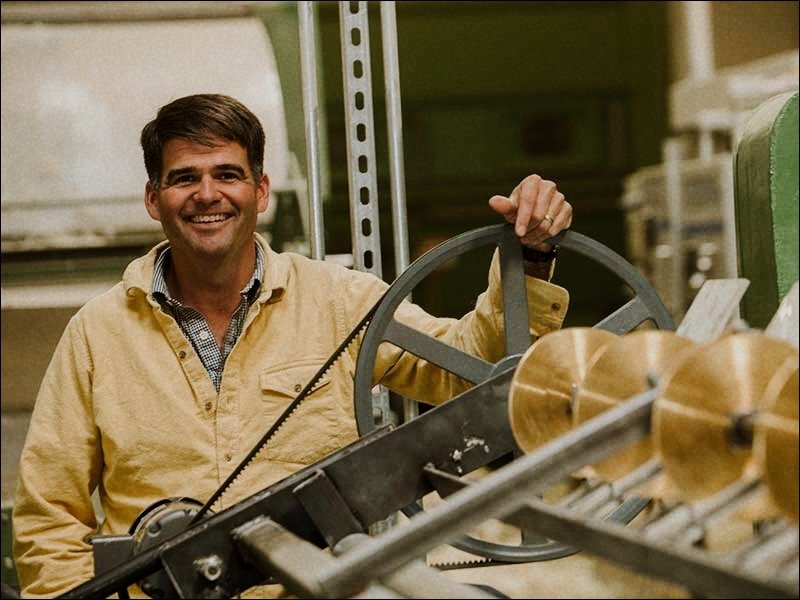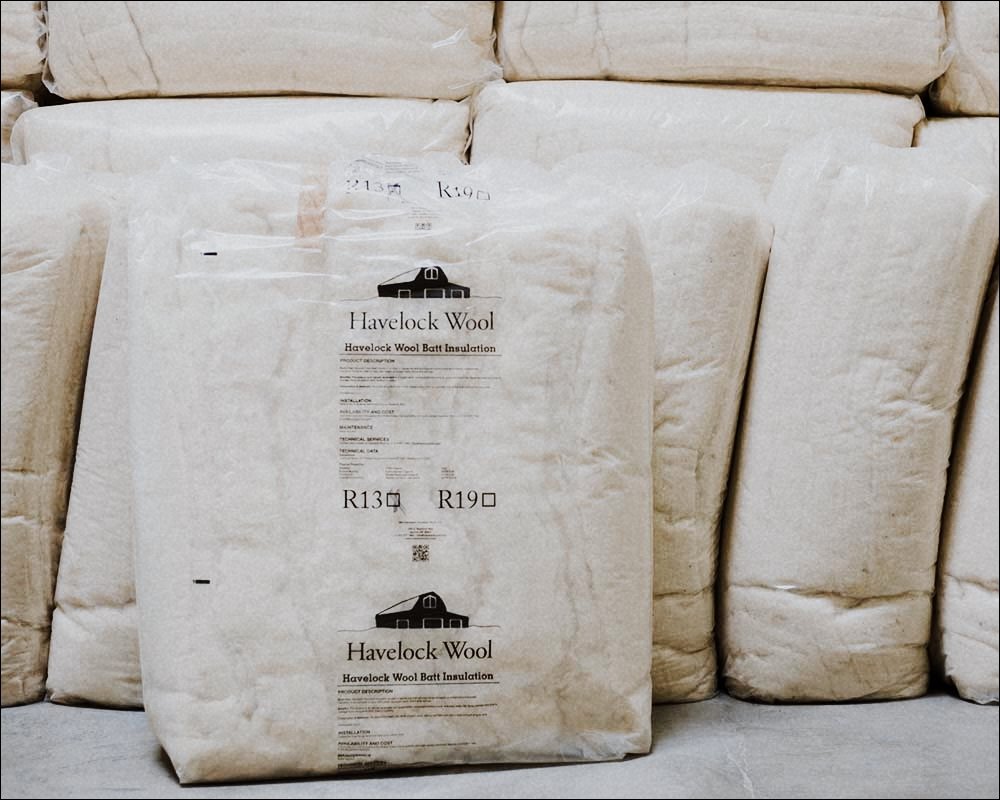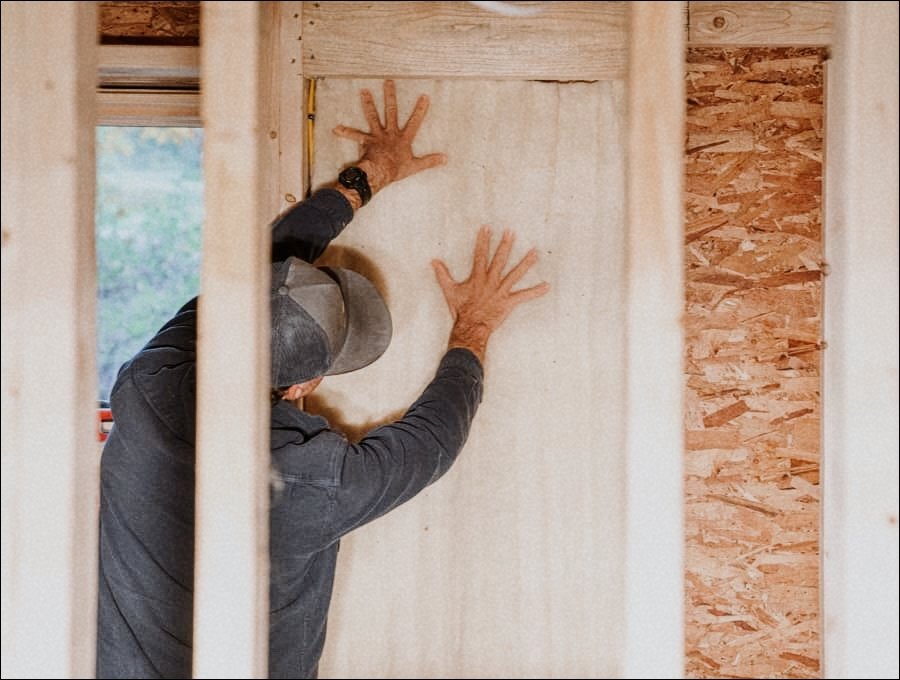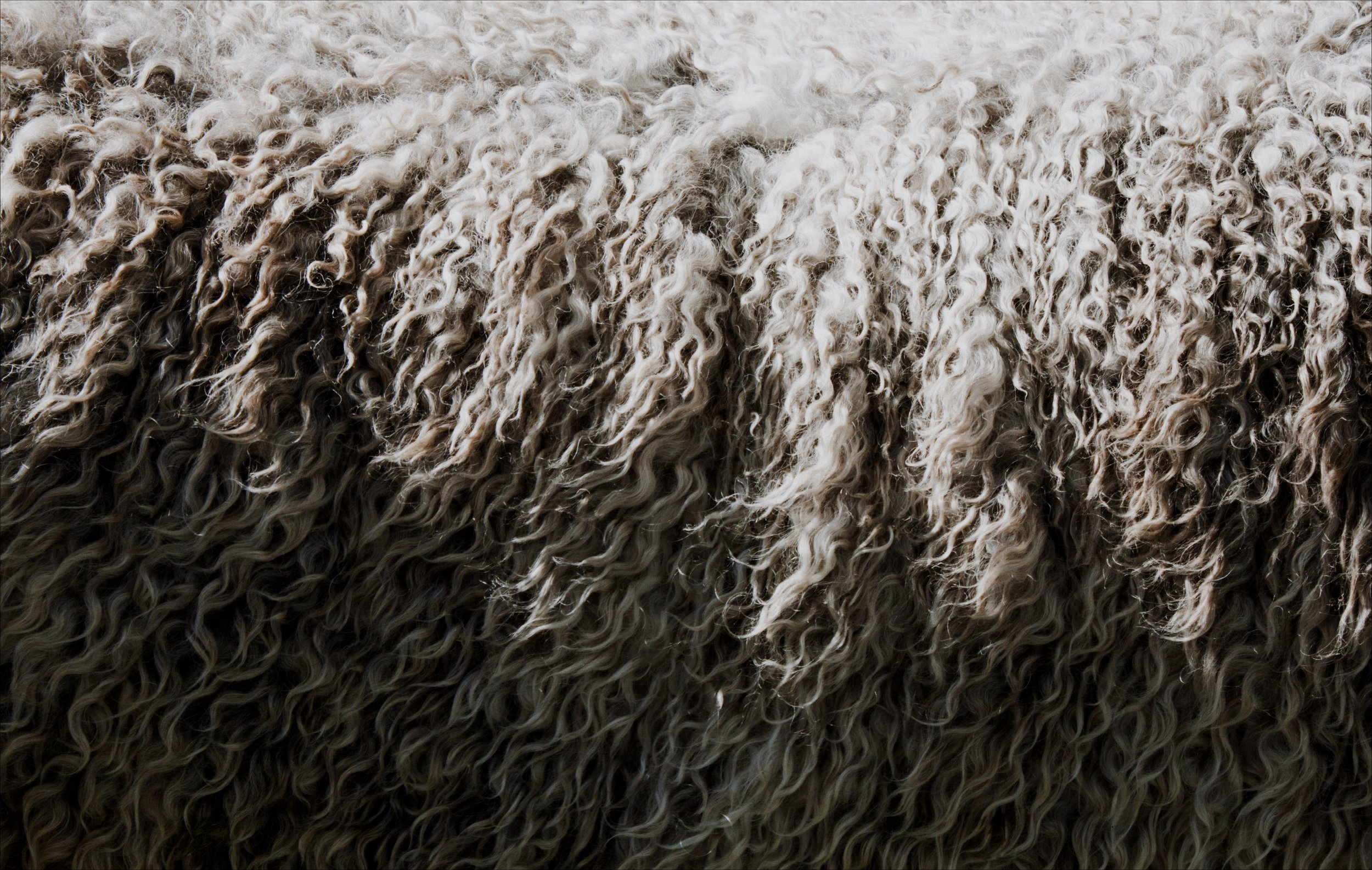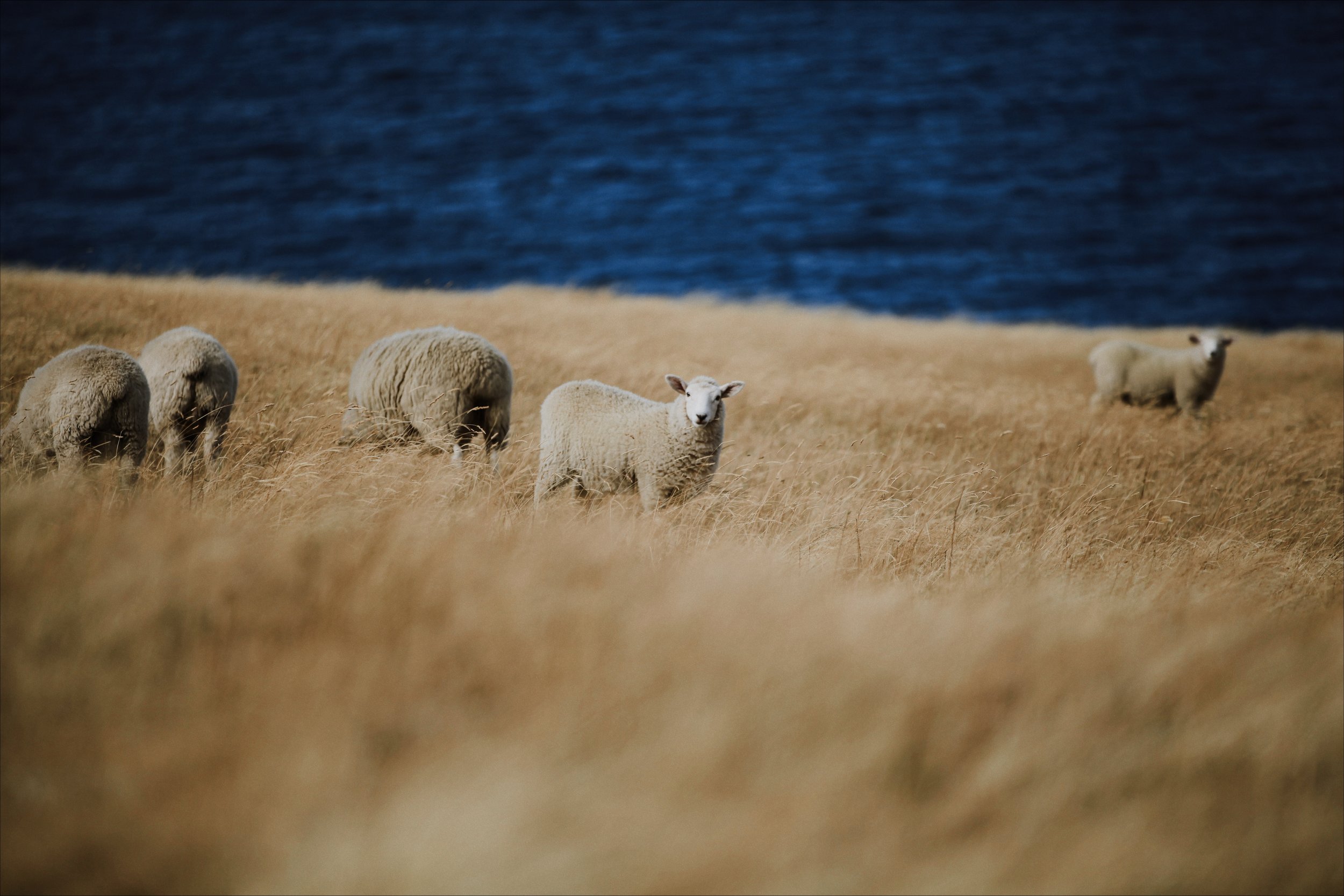A Case for Wool with Havelock Wool Founder Andrew Legge
Above: Andrew Legge, Founder of Havelock Wool. Photograph courtesy of Havelock Wool.
I’ve had a seemingly random infatuation with wool insulation shortly after starting my own home renovation process. It’s not as sexy of a topic as Calcutta marble countertops (which I’m sure we will get to eventually), but I’d say it is just as important, if not more. After about a year in our home, when anyone would ask my partner and I how things were going, we’d say jokingly, “cold”. Except, it wasn’t funny. Single-pane windows, some shingles and a thin vapor barrier nailed to our tongue and groove ceiling was the only thing between us and chilly coastal evenings.
Eventually, we received a suggestion to insulate the areas of our home that heat was likely escaping from, the crawl space beneath our house and the potential space under our roof. Similar to losing bodily heat through your feet and head, this was a concept that made sense to me. Elated that we would be able to effectively warm our home without having to use costly space heaters or figure out how to install some sort of whole-house heating system, I phoned our local roofing and building insulation guys.
In retrospect, this may be where my obsession with clean building started. I knew there must be better options out there than something that required you to wear a respirator during installation, but somewhere between the seemingly elevated cost of more sustainable options, a lack of knowledge and pressure to just get on with it, we ended up with some fiberglass batts and rigid foam board insulation. I’ll spare the gory details, but the installation ended in the driveway with a shop vac in a half-hearted attempt to keep minute pieces of foam board from blowing all over our neighborhood. I decided to uncover alternative options so I could be better prepared for next time.
Inevitably, habit and the likely subconscious pressure to conform (or follow the herd, so to speak) plays a large role in how we all make decisions. After a little research, wool insulation appeared to be an obvious choice to use in the home. It is sustainable, compostable and biodegradable. A clean-building trifecta. So, if wool insulation is such an amazing alternative for it’s do-gooder, harmless properties, then why aren’t we seeing more of it on the shelves of local stores?
I reached out to Andrew Legge, founder of Havelock Wool, a wool insulation company based out of Reno, Nevada, to discuss all things sheep and sustainability.
Right away, Andrew’s bio on the Havelock Wool website grabbed my attention, reading: “He has lived and traveled around the world and seeks to leverage those experiences in bringing a biophilic, best practice to an industry known to contribute excessive waste to our world.” And speaking to him over Zoom did not disappoint.
After working abroad in Asia, Legge found himself spending a lot of time in New Zealand looking for new business opportunities.“I met some guys one day that wanted to do wool insulation and that just boggled my mind. I hadn’t heard of it,” says Andrew. “As I did more and more research, it just made all the sense in the world”. In 2013, Havelock Wool commenced operations in Reno and their insulation has been steadily gaining traction in the building industry ever since.
So, why New Zealand wool? “They are actively trading wool (and) they are actively cleaning wool,” Andrew says, “… they are set up very well for cleaning. It’s water intensive; 85% of the fresh water in New Zealand runs into the ocean. So, it’s really not a big deal to grab some of it and divert it and do a lot of cleaning”. Andrew goes on to explain that the byproduct of that cleaning results in lanolin, which can then be used as a fertilizer. “It’s not a harsh process at all. And New Zealand is very good at it”, Legge says. He lists a few other states and countries that could have the potential to make wool work for them but fall short due cost and/or lack of cleaning capacities.
For New Zealand, “It’s a recognizable line item in their GDP (gross domestic product). Wool is a very serious part of what goes on down there,” Legge observes. He also cites cleanliness, cost and ample supply as the main contributors to why New Zealand wool is the best choice for their insulation.
Above: Havelock Wool batt installation, no mask or gloves required! Photo courtesy of Havelock Wool.
“We get calls all the time from people in the US that . . . would like to have us use their wool,” says Andrew. “We are constantly trying, we just keep saying we would love to do this but here are the parameters. The reality is we (the United States) are already way more expensive anyways and wool, the raw material, is about 80% of our cost. So that translates to a fun conversation.You are actually getting what you are paying for. Our process is very simple, we don’t have tons of employees, we use very low energy. So, anyone who knows anything about wool will appreciate that and will likely turn into a buyer”.
When I ask Andrew about the addition of any substances to the insulation, he answers transparently, “ . . . we use boric acid. You can find it in the ground. Generally speaking, it’s nontoxic. It’s in our lives, it’s in the ocean, it’s a good insect repellant and it offers a slight flame retardancy.” Those qualities among others such as superior sound absorption, air filtering properties and moisture management all make wool an excellent option for every space imaginable.
“There is a very quickly growing, small group of people that do care.”
In fact, one particular group Havelock Wool has found tremendous success with is the van life community. Andrew estimates Havelock’s insulation has been used in roughly 30,000 vans. I mention that the van-lifers seem like an incredible community to make ties with and he agrees, saying “They’re living in small spaces (and) they’re asking the right questions”.
With less than ten years in the industry, Havelock Wool seems to have it figured out. “We are a direct-to-consumer business. We want to talk to you about your project and we’ll deliver insulation to your door. And then you don’t have to worry about your builder or your architect trying to tell you it’s not a good idea”, Andrew says matter-a-factly.
While Legge and I both agree that it’s easy to get bummed out if you think too hard about the climate crisis, he observed, “There is a very quickly growing, small group of people that do care”. Havelock Wool is a wonderful reminder that there are companies out there putting the health of people and the environment first. They may still be young, but they are effectively building a community of conscious consumers who can be expected to stand by them for years to come.
Highlights:
Havelock Wool offers batt and blown-in insulation
Wool insulation absorbs sound and manages moisture
Indoor air quality is not just managed, but improved
Wool is biodegradable and compostable
High R-value (insulation’s ability to resist heat flow): R-Value per inch is 3.6 for batts and 4.3 for loose fill
For comparison, fiberglass insulation has an R-value of roughly 3.1-3.4 for batts and 3.7-4.3 for loose fill
Follow Havelock Wool on Instagram via @havelock_wool.

